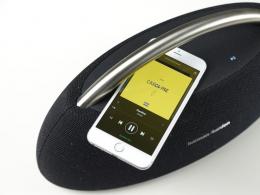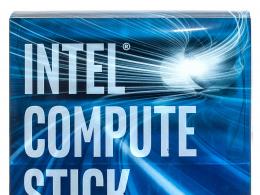Disappears and immediately appears wi-fi. Lost Wi-Fi on laptop in Windows
A router with a wireless connection is most in demand among users, because it is convenient and practical, especially since in most cases the client receives high-speed and high-quality Internet.
But any equipment has problems due to which the connection is intermittent or completely absent.
Most problems with Wi-Fi equipment can be solved by yourself
Let's look at what problems most often occur when using a router and how to fix them?
No connection
First of all, we check if the router is turned on, since the wire often touches, which is why it disconnects from the network. If the device is powered on but the WLAN indicator is off, turn off the access point, wait about a minute, and start it again.
If the indicated indicator lights up, but there is no connection, but the WAN or DSL light is off, then this means that there is no signal from the provider. To check this, reboot the router again, but wait about 5 minutes after shutting down. Internet still not available? So, connection problems arose from the provider.
If the Wi-Fi indicator is on, and there is a connection when you connect the wire to the computer, then there is a problem in the hardware settings or settings of the computer from which you want to connect.
How to check it? Do the following:
- Go to the router settings through address bar browser and enter the network IP address, after which the equipment parameters will appear in front of you.
- Turn on the wireless mode so that the router distributes a signal through the Wi-Fi module.
If in the settings you find that the network is enabled, but it is not on your computer or laptop, then follow these steps:
- Restart your computer, after which the network should appear.
- If you have a laptop, then you should look for the menu for enabling the wireless network adapter and activate it.
Did not work? You should find out what is the root of the problem - in your equipment or router? If the list of networks is completely empty, try connecting to the access point through another device. In the case when the rest of the equipment cannot detect the connection, you need to change the router settings as follows:
- Enter the settings through the browser address bar and go to the Wi-Fi or Wireless menu.
- Change the operation mode to mixed mode (b/g/n).
If you cannot connect to the access point from your computer, but it is available on other devices, you will have to reinstall the operating system.
Entering the wrong password
A problem with a wireless network adapter or access point often occurs when users accidentally enter the wrong key when connecting, which causes the network to be saved in the settings and it seems that it works. In fact, the equipment constantly repeats attempts to connect to the network, without receiving a signal as a result.

To fix this, reconnect to the network, enter the correct password. If the device skips this step, then remove the connection from the list and add it again so that you are prompted to enter a password.
Problem with IP address recognition
It happens that you successfully establish a connection to the network, enter all the data and the equipment reports a successful connection, but the whole process stops at the line “Obtaining an IP address”. If the device cannot find the correct address, then the signal is cut off, and the computer constantly tries to re-establish communication. To prevent this from happening, in the router settings, find the item on obtaining IP data and activate the mode for automatically obtaining this address.

Weak signal and interruptions in speed
In a situation where all passwords are entered correctly, the connection is established, but the speed is lower than necessary or the signal is constantly cut off, it is worth considering whether there are any interferences with the normal operation of the router. It can be interfered with by walls, objects that reflect the signal, or other networks. In the first two options, you need to install the router so that it can create the largest possible coverage area or move closer to it.
If several similar devices are installed in parallel near your apartment or house, then they all interfere with each other due to the communication channel used. This means that all technology uses the same channel, which is overloaded as a result, and the only way to fix the situation is to change it.
You can do it like this:
- Go to the router settings through the IP address in the browser, find the Internet connection menu (in most cases, this is the Wireless section).
- In the Chanel line, change the channel to 5.6 or 11 so that there is a maximum distance between the operating modes used on other devices.
Connection without Internet access
In many cases, Wi-Fi problems are the following: when viewing the properties of the connection, you see that the connection is established, but the message "no Internet access" is displayed. What does it mean?
Most likely, the IP address was spelled incorrectly. This option is relevant when, when viewing the connection properties, the line "Without network access" is opposite the value of the IPv4 connection. To fix this, check if the DHCP server is enabled in the options network equipment. Next, look at the IP address settings, in the connection settings, click on properties, and in the window that appears, you will see the IP and DNS address settings. If they are set manually, then rewrite the combinations for yourself just in case, then select the options for obtaining addresses automatically.
Did not help? Enter manually the standard combination of addresses inherent in most routers:
- IP address - 192.168.1.2., subnet mask - 255.255.255.0, gateway - 192.168.1.1. In the DNS settings, enter the same address in the server line as for the gateway, an alternative value is 8.8.8.8.
- For D-Link and NetGear models, the values are slightly different - in the IP address lines, enter 192.168.0.2, the mask is 255.255.255.0, the gateway is 192.168.0.1 and the DNS address is 192.168.0.1.
No changes as before? Check your settings local network with the router settings - all IP and DNS data must match in order for the computer to access the Internet.
Selective connection operation
Most of all, users are surprised by the situation when the connection is present, but the pages are not loaded, but Skype works as if nothing had happened. This happens in case of incorrect DNS settings. You can enter the correct data in order to continue using the Internet in the following way:
- Select your network connection, click on its properties, and in the window that appears, select the button with the same name.
- In the IPv4 connection protocol, change the DNS address combination - enter the numbers 8.8.8.8 in the first line, and 77.88.8.8 in the second.
We examined the most common problems that occur in the operation of Wi-Fi routers. As you can see, all of them are quite simple to solve, so every user will be able to find and eliminate the reason for the lack of an Internet connection - it will take quite a bit of time and effort.
Very often I have to answer questions related to various problems that can be observed in the process of connecting to wireless networks. When Wi-Fi does not work on a laptop. It is during the connection process that users encounter many problems. It turns out that wifi driver adapter is not installed on the laptop, the question arises how to enable it, or how to fix the error that appears during the connection process. But even if everything is successfully connected, then there we can expect trouble in the form of lack of access to the Internet.
I decided to write one big article in which to collect solutions to all the most popular problems and errors. The main task is to describe everything plain language, and sort out all the options point by point, and of course write about the solutions. This instruction is suitable for Windows 10, Windows 8, and Windows 7. As a rule, most solutions are no different in different version Windows. As for the laptop itself, there is also not much difference. Tips are suitable for models from ASUS, HP, Lenovo, DEL, DNS, and even for ordinary desktop computers from WiFi adapter mi.
Based personal experience, comments on other articles, and features of the operating Windows systems, I have identified 4 main problems that you may encounter when connecting to Wi-Fi on a laptop. I think the problem that caused you to come to this page will definitely fit one of the 4 points:
- First of all, we will figure out what to do when on a laptop wifi not working for a reason total absence some wireless settings when there is no "Wireless" connection in network connections network connection", or "Wireless network" (Windows 10). Also, when there is no Wi-Fi adapter in the device manager.
- Let's find out why laptop does not see Wi-Fi network. There may be a problem when the connection icon is crossed out with a red cross, the inscription "No connections available". Consider different ways to turn on the wireless network.
- There are often times when Laptop sees network but won't connect to Wi-Fi. An error occurs when connecting. Also, here I will attribute the problem when neighboring networks but the laptop does not see home wifi net.
- Well, let's not ignore the problem when WiFi connected but internet not working but the sites don't open. Usually, the wireless network icon with a yellow exclamation mark, and with the status "no internet access", or "restricted". True, there are times when there are no errors and everything seems to be fine, but there is still no access to the Internet.
Having described the solution to all these problems, I hope to answer the question in as much detail as possible: "why does Wi-Fi not work on a laptop." We will consider almost all cases and problems that you may encounter in the process of connecting to wireless networks. By decision different problems and errors that will be discussed in this article, I have already written separate, more detailed instructions. I will provide links to them as the article progresses.
Before moving on to any settings, I advise you to look at the instructions for connecting to wireless networks: We have, and a separate one. Especially if you are doing this for the first time. Perhaps they simply did not understand all the nuances.
If we can't connect, we'll figure it out.
Checking for a Wi-Fi adapter and driver
The first thing I advise you to do is to check the operation of the Wi-Fi adapter. Make sure it works and the driver is installed for it. At this stage, there may be two problems:
- The adapter itself is just broken (hardware failure). This happens very rarely.
- And a very common problem Wi-Fi adapter driver not installed. Or installed driver does not work correctly. This happens very often on new laptops, or immediately after installation, or reinstalling windows . If Windows 10 almost always automatically installs the driver on the wireless adapter (although not always working), then in previous versions Windows needs to do this manually. In one of the articles I already wrote,
To check this, just go to the device manager. It can be found through a search. Or press the keyboard shortcut Win+R, enter the command (can be copied) devmgmt.msc, and click Ok.
Immediately open the tab Network adapters". There should be an adapter, the name of which will be "Wireless", or "Wi-Fi". This is the adapter through which the laptop connects to Wi-Fi. If you have one, then pay attention to the icon next to name It should be the same as mine in the screenshot below.
If wireless adapter No:
- If you have only one adapter there, Network Card(LAN), and there is no wireless adapter, then most likely this means that you need to install a driver.
You need to go to the website of the manufacturer of your laptop, find your model there (most often via search), go to the driver download section, and download the driver for the Wireless (WLAN) adapter. Then, run its installation. In this case, you will need an article and. And separate.
If you have a wireless adapter but Wi-Fi is not working:
- Click on it right click mouse and select "Properties". Pay attention to what will be written in the "Device Status" window. There should be an inscription "The device is working properly."
- Again, right-click on the adapter and see if it says "Enable". If there is, select it. After that everything should work.
- Try following the steps I wrote about in the article about . Also, you can try.
- Try reinstalling the driver (links to instructions I gave above).
- See other solutions from this article, which I will write about below.
It all starts with the adapter in the device manager. If it is not there, then there will be no "Wireless Network" adapter in network connections. Also, in Windows 10 and Windows 8 there will be no buttons and sections of Wi-Fi settings.
Turn on Wi-Fi on a laptop
In most cases, all solutions to this problem come down to simple inclusion WiFi module. Since it can simply be disabled. There are several ways to turn on a wireless connection. By activating wireless module key combination, or a separate switch on the laptop case, or check and turn on Wi-Fi in Windows settings. Now we will consider all this in detail.
If the wireless network on your laptop is disabled, then most likely the connection icon will be like this (depending on how and where the module is disabled):

In Windows 7, the icon will look a little different, but the meaning is the same.
And first of all, I would probably advise you to try turning on Wi-Fi programmatically. In settings operating system.
How to do it in Windows 7
In Windows 7, as well as in the "eight" and "ten", you can do this in network connections. Go to Network and Control Center public access". From there, go to "Change adapter settings". Do not pay attention that the screenshots were taken in Windows 10. In all cases, the steps will be the same.

In the new window, you need to right-click on the adapter "Wireless Network Connection", or "Wireless Network", and select "Enable".

After that, look at the connection icon (on the notification bar). If a yellow star appeared next to it, then this means that the laptop sees available networks and you can join them.
If you do not have a wireless adapter in the "Network Connections" window, then most likely it is not installed required driver. It needs to be installed. You can check this in Device Manager. I wrote about it above.
If Wi-Fi is not working on a Windows 10 laptop
A few specific tips for Windows 10: If the Wireless Network adapter is enabled (see screenshot above), and the laptop still does not see available networks, then Wi-Fi is probably disabled by the button, or in the parameters. Let's check. Just click on the icon on the notification bar, and on the "Wi-Fi" button (if she is there).

Or in the settings. In the "Network and Internet" section.

Well, if you have there are no these buttons and tabs in the settings, then see the first section of this article, or a separate instruction: .
On Windows 8
First of all, check if the adapter is enabled in the "Network Connections" window (shown above).
Open Options. In the "Change computer settings" section, select the " Wireless connection". Then turn on the wireless network.

We look at the icon with the connection status. The laptop may have already seen the available networks.
Turn on the wireless network with the buttons on the laptop
If the methods described above did not turn on the wireless network, then it may be possible to do this in hardware. Everything is very simple here. On almost every laptop, to turn on and turn off Wi-Fi module is allocated a keyboard shortcut, or a separate switch on the case (rare, but it happens).
Let's just take an example. On my ASUS laptop to turn on Wi-Fi you need to press the keyboard shortcut Fn+F2. Look like this:

This will always be the Fn key + a key from the F1 - F12 row. Here are the combinations for other laptops:
Dell: Fn + F2, gigabyte: Fn + F2, HP: Fn + F12, Fujitsu: Fn + F5, Acer: Fn + F3
In some cases, this may be a special switch on the laptop case, which looks something like this:

Important point: function keys may not work properly (or not work at all) due to the fact that the appropriate driver is not installed, which is responsible for the operation of these keys.
Here's an example: in Windows 7, I have installed all the drivers from the official ASUS website, and the Fn + F2 key combination really controls wireless networks. And in Windows 10, I did not install the driver. And when you press Fn + F2, the flight mode is turned on and off.
Not even the driver, but the utility is responsible for the operation of the frequency function keys. You can download the utilities in the same section as the drivers. Download strictly for your laptop model and installed Windows. For ASUS laptops, the utility is called "ATKACPI driver and hotkey-related utilities".
I hope Wi-Fi on your laptop is still working, and you were able to connect to the required network. And now we will consider the problems that you may encounter during the connection process.
Solve Wi-Fi connection problems
There are some of the most popular mistakes, which I will discuss below. We will not consider solutions to each problem, since I have already written about them in separate articles. I'll just give links.

If the laptop does not see the home Wi-Fi network
Provided that he sees neighboring networks, and other devices see your home Wi-Fi network. In this case, I advise you to first restart the laptop and wifi router. Then, you can try in the settings of your router. Set a static channel, but no higher than 10th. You can also change the name of your wireless network in the router settings.
If you have any other problem during the connection process, then write about it in the comments. I'll try to suggest something.
If everything is connected, but the Internet does not work
Another nuisance that can be encountered after the laptop successfully connects to the wireless network. Most likely, there will be a yellow exclamation mark next to the connection icon.

Well, accordingly, the connection status is "Limited", or "Without access to the Internet." There can be many reasons, as well as solutions. I have written two separate articles on this issue. The first one is for Windows 7, the second one is for Windows 10:
- And a separate article about the problem
In addition, there may be a case when there is no exclamation mark next to the icon, but the sites in the browser still do not open exactly. DNS error. I also wrote about the solution to this problem in the article. At the same time, the Internet in some programs can work. For example, in Skype.
Try running troubleshooting.

Most often, the following error messages appear in the diagnostic results:
These errors are relevant for all versions of Windows.
Afterword
The very situation when Wi-Fi does not work on a laptop is very ambiguous. Within the framework of one article, it is very difficult to collect all the information on such a popular problem. And when the article is very large, it is difficult to understand it. I tried to put everything on the shelves and consider all the most popular cases. I hope you found a solution to your problem.
If nothing worked, you can describe your case in the comments. I'll try to help with advice. Please share your solutions useful information! Good luck!
Before proceeding to find out why Wi-Fi or the Internet does not work, you should know (especially for those who have just purchased a Wi-Fi router) that it is not enough just to connect the provider's cable to the router, it still needs to be configured (set up the Internet and Wi-Fi network ). All the methods described below are valid if Wi-Fi and the Internet worked for you before, and then it suddenly stopped or you cannot connect a new device to Wi-Fi. For convenience, I divided the article into two parts, the first is devoted to the inability to connect to a wireless network, the second part will answer your questions if you are connected to a Wi-Fi network, but there is no Internet.
Unable to connect to Wi-Fi network.
Rebooting the router.
The first thing to do if you have problems connecting to a Wi-Fi network is to restart your router. To do this, simply disconnect the power supply from the router and reconnect after a few seconds. After 1-2 min. the device will boot up, then try to connect to the wireless network again. In order to avoid such situations in the future, I recommend updating the router firmware (maybe the manufacturer knows about the problem and fixed it in the new firmware).
Enabling Wi-Fi module on a laptop.
Check if Wi-Fi is enabled on the laptop, I won’t turn around, I described all the ways to enable Wi-Fi in the article How to turn on Wi-Fi on a laptop .
Change the wireless network mode.
If you are trying to connect a device (laptop, smartphone) that is more than 5-7 years old, please note that it may not support modern regime Wi-Fi works - n. Therefore, you need to switch the router to the operating mode that is supported by the device or enable mixed mode b/g/n. More details about Wi-Fi operating modes are described. In order to switch the wireless network mode, you need to go to the web interface of the router, go to wifi settings and choose the appropriate mode.
Delete duplicated SSID.
One of possible problems not being able to connect to Wi-Fi is a duplication of the Wi-Fi network name (SSID). Suppose you come to your friends, they have a Wi-Fi network called "Home", you have successfully connected to it. Time passed and already at other acquaintances or at home you met the same network name. The laptop (this also applies to tablets, smartphones) tries to connect to the network using the previously saved password, but it fails because this name uses New password. To solve this problem, you need to remove from the list of saved WiFi networks matching network.
To do this, right-click on network icon in the lower right corner of the screen and select "Network and Sharing Center".

After that, you will see a list of saved wireless networks. If you see that the network you are trying to connect to is on this list, you need to remove it from this list. Select a network and click the "Delete" button. After that, you will need to enter a password to connect to the wireless network.

No Wi-Fi Internet.
Internet payment verification.
The simplest thing that can happen when the Internet is not working is that it's time to pay for it or work is underway at the provider. To clarify the situation, call the provider and check if you have a debt for the Internet and whether work is being done on the line.
Static IP address.
One of the problems of the Internet not working, maybe - the registered static address is not with the network settings that are needed. In this case, I recommend using automatic receipt network settings. To do this, you need to get into the Network and Sharing Center. One way to do this is to right-click on network icon in the lower right corner of the screen and select "Network and Sharing Center".

Another way is to use hot keys

It does not matter which of the methods you used, the result will be the same - a window will appear on the monitor Network connections. Next, you need to wireless connection press with two mouse clicks, In the status window that opens, select "Properties" in the properties window "Internet Protocol version 4 (TCP / IPv4)"


Router problem.
The Internet may not work due to a router failure, the easiest thing to do is to restart it. There are situations when the router resets the Internet settings, in which case you need to connect to it via the web interface and re-enter the Internet settings, in order to experience fewer problems with the router in the future, I recommend updating its firmware.
Conclusion
In this article, I described all the ways I know to solve problems with Wi-Fi and the Internet. If these methods did not help you, you can describe the problem in detail in a comment and I, together with the readers of this site, will try to help you.
Please turn off the power
"All you bloggers need is to turn off your base stations, - annoyed more and more, Steve Jobs (Steve Jobs) said to the assembled viewers at the iPhone 4 show in June 2010. – If you want to see samples, turn off laptops, all dots WiFi access and put them on the floor."
In a crowd of 5,000 people, barely 500 had working Wi-Fi devices. It was a real wireless apocalypse, and even a group of the best specialists from Silicon Valley could not do anything about it.
If this example of the urgent need for 802.11 doesn't apply to everyday life, think back to September 2009, when the THG team first drew attention to the technology from Ruckus Wireless in their review "Beamforming technology: new opportunities for WiFi". In that article, we introduced the reader to the concept of beamforming and reviewed several comparative test results in a fairly large office environment. At that time, the review turned out to be very instructive, but, as it turned out, there was still a lot of things left to tell readers about.
This idea came to us a few months ago when one of our employees set up a nettop for his children, using a dual-band wireless USB adapter (2.4 GHz and 5.0 GHz) to connect to his Cisco Small Business-Class 802.11n access point. Linksys with 802.11n support. The performance of this wireless device turned out to be terrible. Our employee couldn't even look streaming video from the YouTube site. We believe that the problem was the nettop's weak information processing abilities and graphic display data. One day he tried to change the device to wireless bridge 7811 described in our article "802.11n Wireless Routers: A Test of Twelve Models" by taking it from previously used equipment. And I immediately felt the difference, because streaming video could now be watched at a fairly good level. It was like switching to a wired Ethernet connection.
What happened? Our employee was not in the audience along with 500 bloggers who were blocking his connection. He used what is generally considered to be the best Cisco/Linksys small business hardware that he personally tested and knew to have better performance than most competitors. trademarks. It seemed to us that switching to a wireless bridge from Ruckus was not enough. Too many questions remain unanswered. Why did one product perform better than another? And why does the original article state that performance is affected not only by too close a resemblance between client and access point, but also by the shape of the AP itself (access point)?
Questions left unanswered
Six months ago, Ruckus attempted to develop a test case to help us sort out unanswered questions by analyzing the impact of over-the-air electromagnetic interference on the performance of Wi-Fi equipment, but before the tests could begin, the company stopped the experiment. Ruckus installed high-frequency noise generators and standard client machines, but the measurement of test results obtained in one minute was replaced by completely different values in two minutes. Even averaging five measurements at a given location would be meaningless. That's why you've never seen real interference studies printed in the press. So difficult is the management of the environment and variables that testing becomes absolutely impossible. Vendors can go on and on about all the performance numbers they've gotten from testing optimal configurations in high frequency soundproof chambers, but these statistics are meaningless in the real world.

To be honest, we have never seen anyone explain and explore these issues, and so we decided to seize the initiative by shedding light on the nature of performance. WiFi devices and unraveling their hidden secrets. The review will be large enough. We have something to tell you, so we are going to divide the article into two parts. Today we will introduce you to theoretical aspects(how Wi-Fi equipment works at the data level and hardware level). Then we will continue to supplement theory with practice - the actual testing in most extreme wireless environments that we have ever encountered; this includes 60 laptops and nine tablets, all tested on the same access point. Whose technology will survive, and whose will be far behind the competition? By the time we finish our research, you will not only have an answer to this question, but you will also understand why we got these results and how the technologies behind these results work.
Network congestion vs. line hijack
We usually use the word "congestion" to describe cases of excessive wireless traffic, but when it comes to important networking questions, congestion doesn't really mean anything. It is better to use the term "capture". Packets of information must compete with each other for the right to be sent or received at the right moment when there is a free gap during the transmission of traffic. Remember that Wi-Fi is a half-duplex technology, and therefore, at any given time, only one device can transmit data on the channel: either the AP or one of its clients. The more equipment on the wireless LAN, the more important line capture control becomes, as there are many clients competing for the airwaves.

With the propensity of wireless communications networks to constantly grow rapidly, it becomes extremely important who exactly is preparing to transmit data and when. And here there is only one rule: whoever exchanges information in silence wins. If no one is trying to transmit data at the same moment as you, then you will be able to interact with desired devices unhindered. But if two or more clients try to do the same at the same time, there will be a problem. It's like talking to your buddy on a walkie-talkie. When you speak, your friend has to wait and listen. If you both try to speak at the same time, neither of you will hear each other. In order to communicate effectively, both you and your friend must control access to the air and hold the line. That's why you say something like "hi" when you finish speaking. You are signaling that the air is free and someone else can talk.
If you've ever been on the road with a walkie-talkie, you may have noticed that it only has a few channels available - and there are still a lot of people around who also came up with the idea of walking with a walkie-talkie in their hands. This is especially true of the time when there were no cheap cell phones- it seemed that everyone you met had a walkie-talkie. You might not have talked to a friend, but there were other people with walkie-talkies next to you who, as it turned out later, were using the same channel. Every time you were about to put in a word, someone was already occupying your channel, making you wait... and wait... and wait.
This type of interference is called "co-channel" interference, in which the interfering party makes it difficult to communicate on your channel. In order to solve the problem, you can try to switch to another channel, but if nothing better than this is available, you will be forced to work with very, very slow speeds data transmission. You will only have to transmit data when all the chatty morons around you have been silenced for a moment. You may need to say nothing at all, such as "Gee! That co-channel noise again!", but you will have to wait 15 minutes for a moment of calm, during which you can make a short, concise remark.
|
|||
|
| |||






